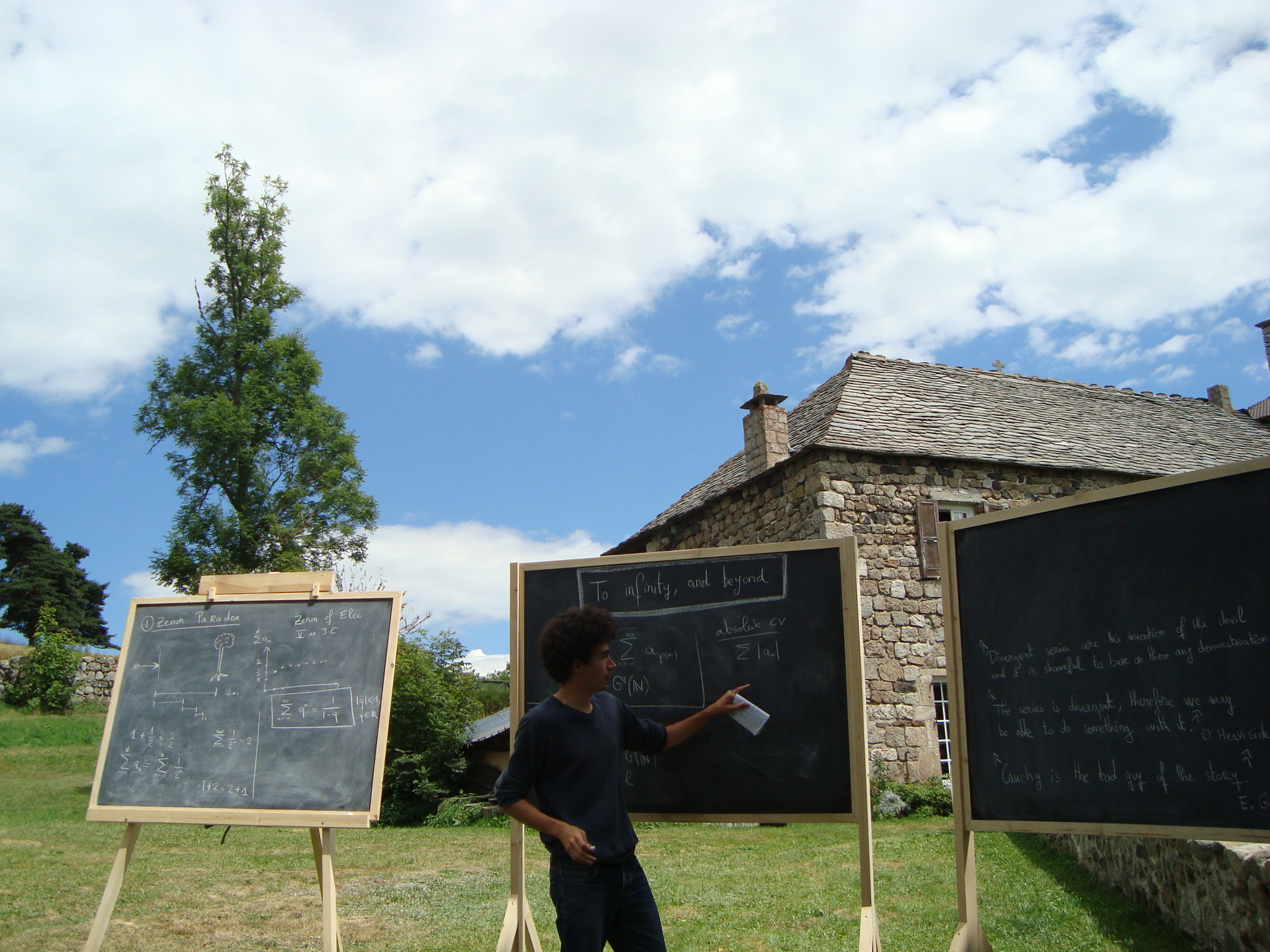
|
|
|
CoursesSix 3-hour courses will be held in the mornings. The teachers are all PhD students or post-docs who have volunteered to givee a course during the preparatory phases of l'Agape. The topics will be the following:
First chapter of Kaplan's course, https://arxiv.org/pdf/nucl-th/0510023.pdf
---------------------------------------------------------------------------------------------------------------------------------- "Geometric algebra and calculus - A unified language for mathematics and physics" by Václav Zatloukal (CTU Prague) Geometric algebra is a field of mathematics that studies geometric properties of Clifford algebras and their applications to physics. The geometric (of Clifford) product on a vector space combines the inner and outer product, and hence gives rise to a rich algebraic structure of multivectors and relations between them. Geometric transformations such as rotations or projections enjoy simple algebraic representation in terms of operations within the algebra. Geometric calculus takes advantage of the geometric algebra structure to formulate multidimensional differential and integral calculus that is general and powerful, as well as elegant and comprehensive. Geometric algebra and calculus unify surprisingly many fields of mathematics, which are indispensable for physicists, but are usually taught separately, into a single coherent framework. Namely, complex and quaternionic numbers, vector calculus, differential forms and integration on manifolds, complex analysis, Lie groups and algebras, spinors, differential geometry of curved manifolds, and perhaps others. My lecture should serve as an introduction, overview, and an illustration of the power of the geometric algebra and calculus. Read as much as you like from „Imaginary Numbers are not Real — the Geometric Algebra of Spacetime“ by Gull, Lasenby and Doran, available at http://geometry.mrao.cam.ac.uk/wp-content/uploads/2015/02/ImagNumbersArentReal.pdf
---------------------------------------------------------------------------------------------------------------------------------- "Zététique: an Intellectual Self-Defense" by Jérémy Attard (CPT Marseille) Scientific approach is the best way we have to produce faithful knowledge… but why is it so? Why do we need a certain method, why is it not possible just to trust our intuitions, feelings, or personal beliefs? We will show how to apply "zététique" (scientific skepticism) not only to produce scientific knowledge, but also to refine our critical thinking and protect ourselves from a wide range of possible manipulations; indeed, some conspiracy theories, alternative medecine practices, information processing on medias, etc. are based on fallacious reasonings and highly biaised methods which can be hard to detect without a specific training (even among scientifically educated people). My proposal is to share some methods of intellectual self-defense based on a practical epistemology, which all start with the question: "how do I know that I know?" ---------------------------------------------------------------------------------------------------------------------------------- "Geometric Quantization and Applications to Physics" by Alexander Thomas (IRMA Strasbourg) Since Einstein's theory of general relativity, geometry entered deeply into the realm of physics. But quantum mechanics has long resisted a geometric approach. In the 1970's a geometric recipe for the process of quantization was developped. In these lectures I propose a journey into this beautiful theory with an important emphasis on concrete physical exemples. ---------------------------------------------------------------------------------------------------------------------------------- "Mesoscopic Systems: Non-equilibrium States and Fluctuations" by Tim Ludwig (KIT Karlsruhe) ---------------------------------------------------------------------------------------------------------------------------------- "Algebroids and Groupoids in Physics - Connecting dynamics, symmetry and quantization" by Carlos Zapata Carratala (EMPG Edinburgh) This course will be a, hopefully pedagogical, introduction to the theory of Lie algebroids and groupoids. I will cover the main definitions and results in the field, specially those most relevant to physical applications and with a focus on conceptual understanding over technical details, probably in the first lecture. The second lecture will be devoted to seeing how the concepts introduced earlier come into play in physics. More concretely I will attempt to provide a cohesive view for the treatment of dynamics and symmetry that naturally fits most of the existing physical models and that allows for a general approach to the problem of quantization. Finally, it is worth mentioning that the philosophy behind this course is that, when properly understood, groupoids provide the most natural way to encode the abstract notion of "symmetries of a physical system", and this course will try to persuade anyone following it that groups (which are a special class of groupoids) are limited in this respect.
|


